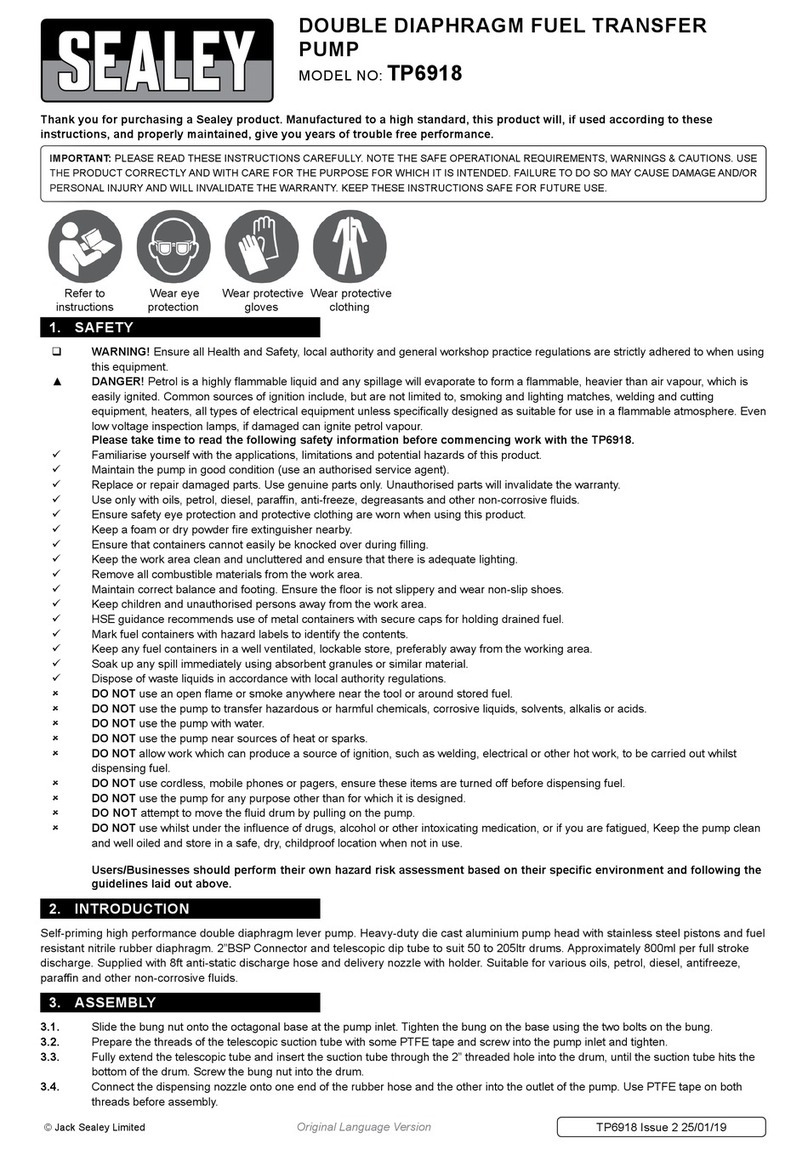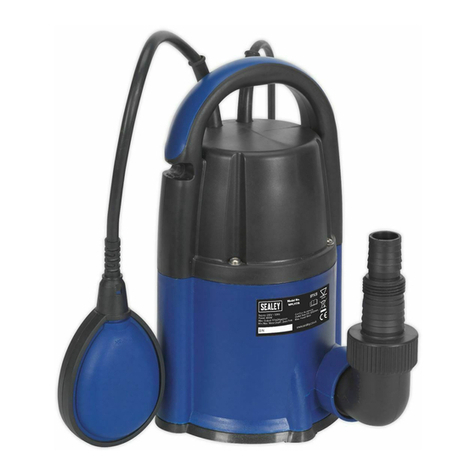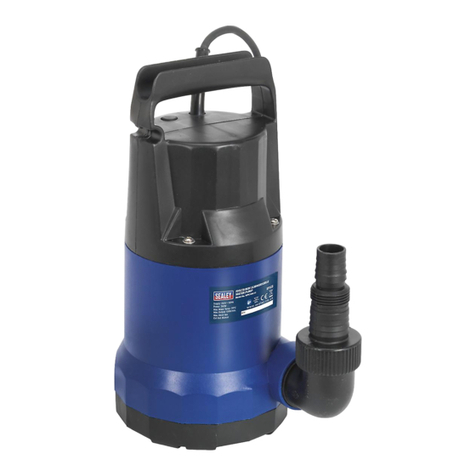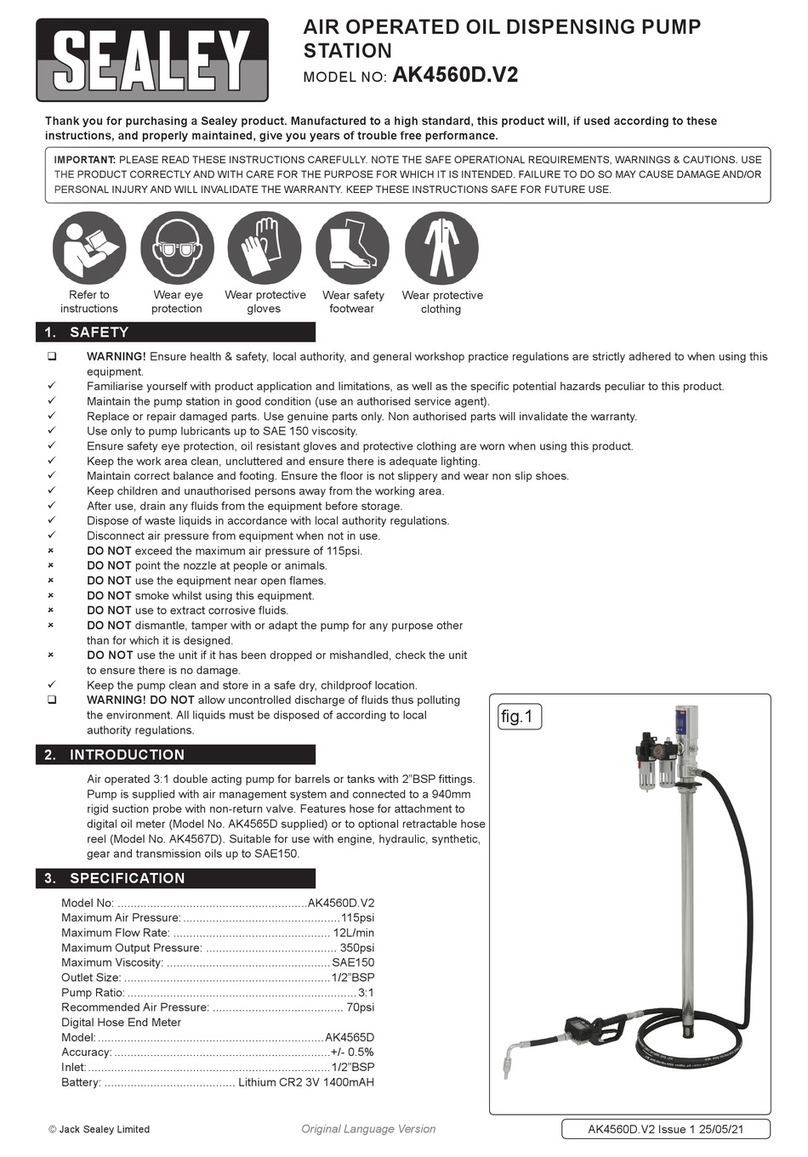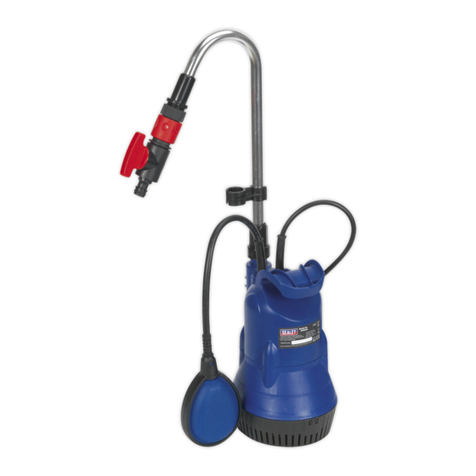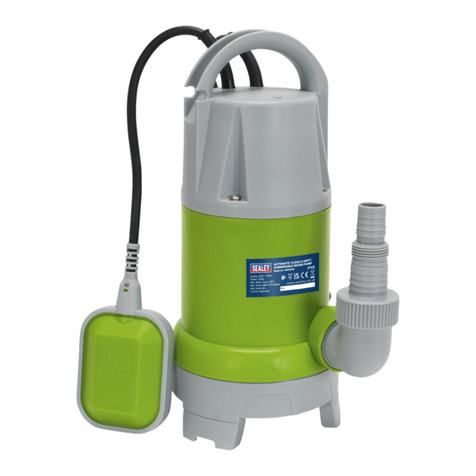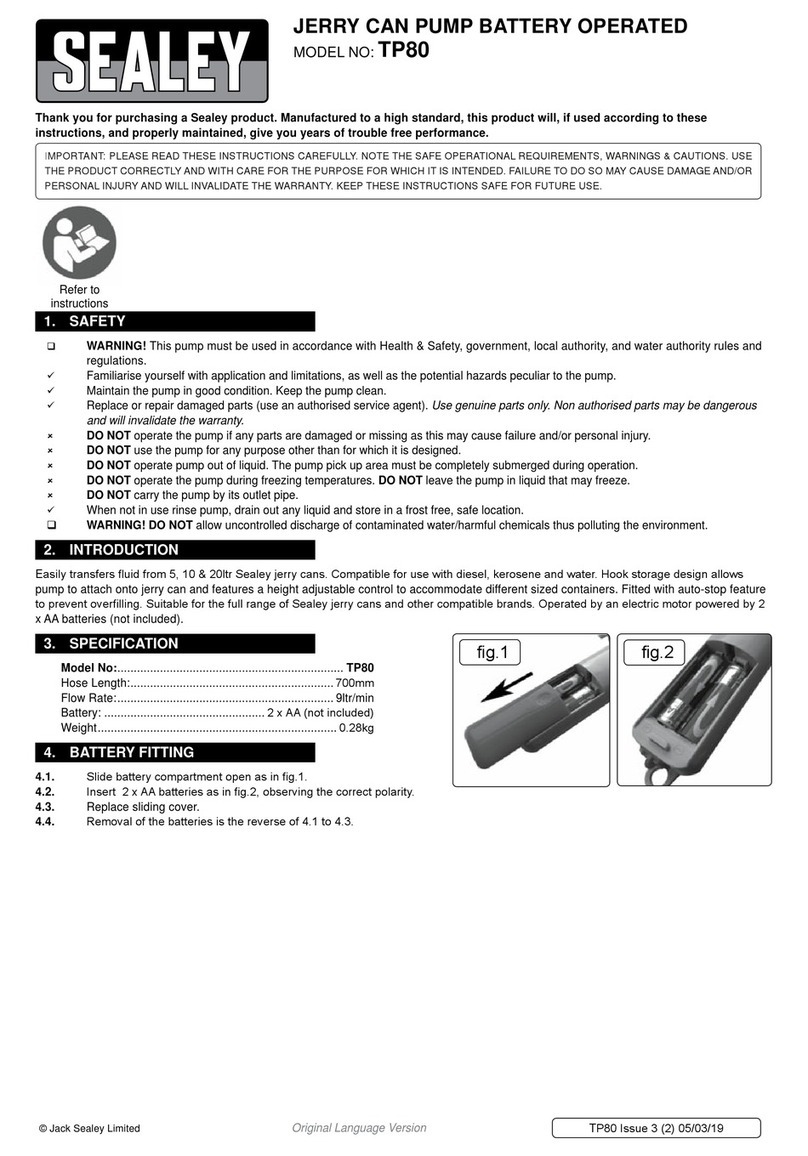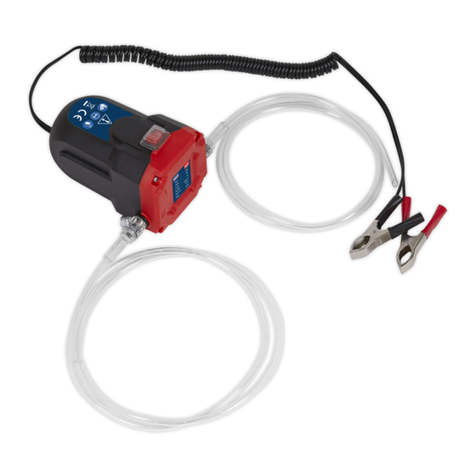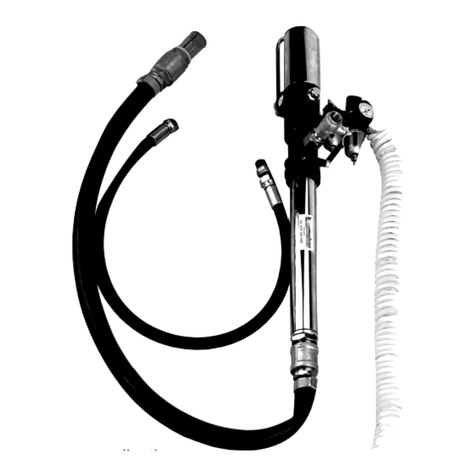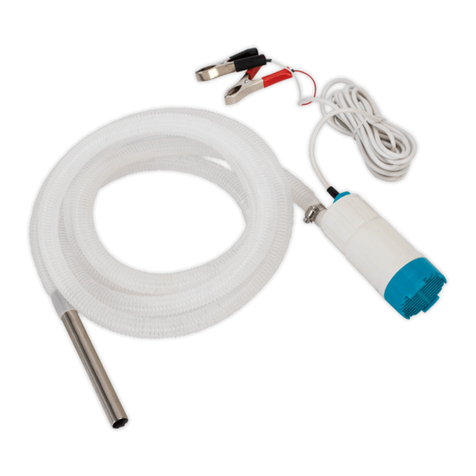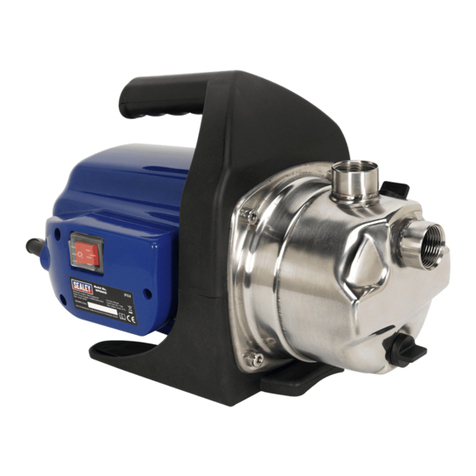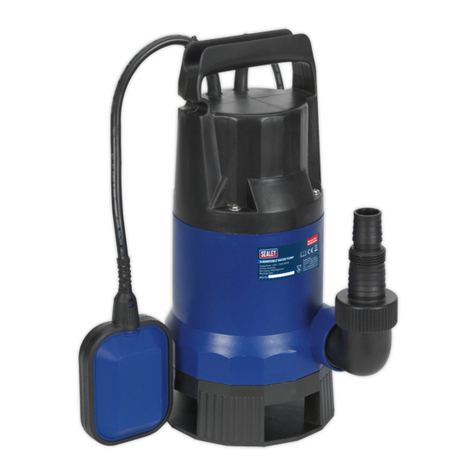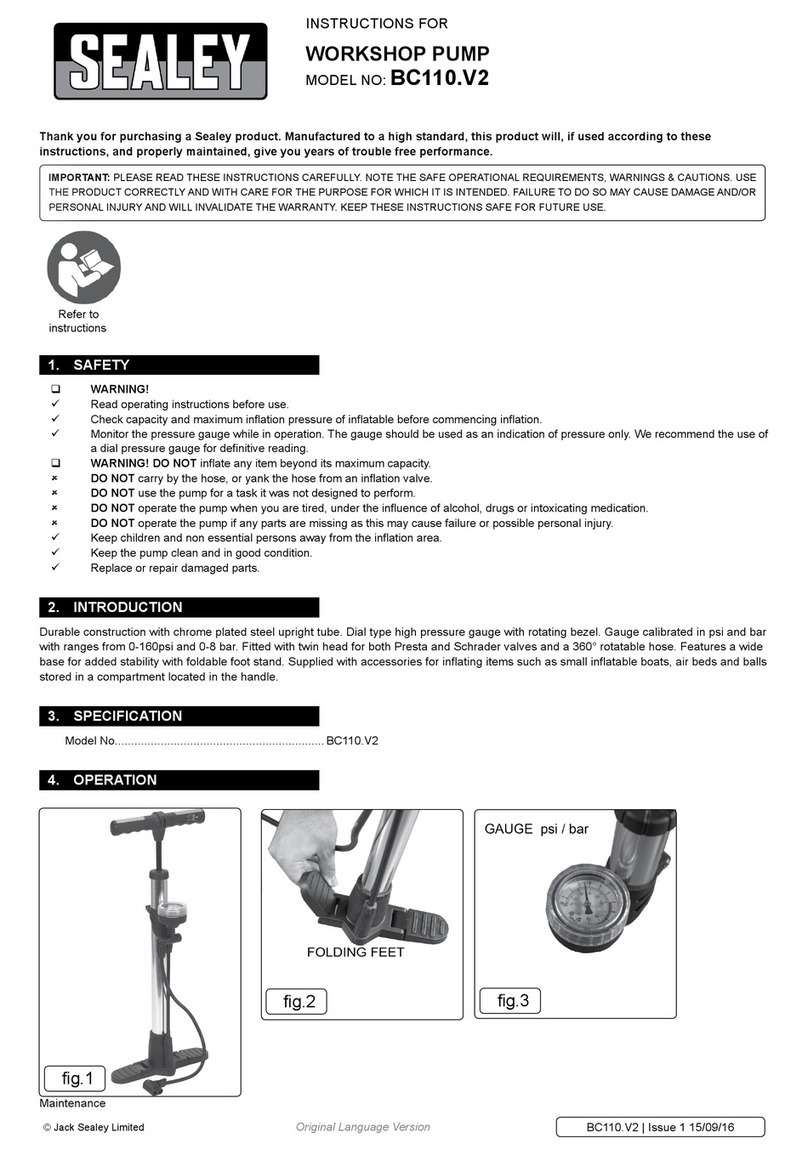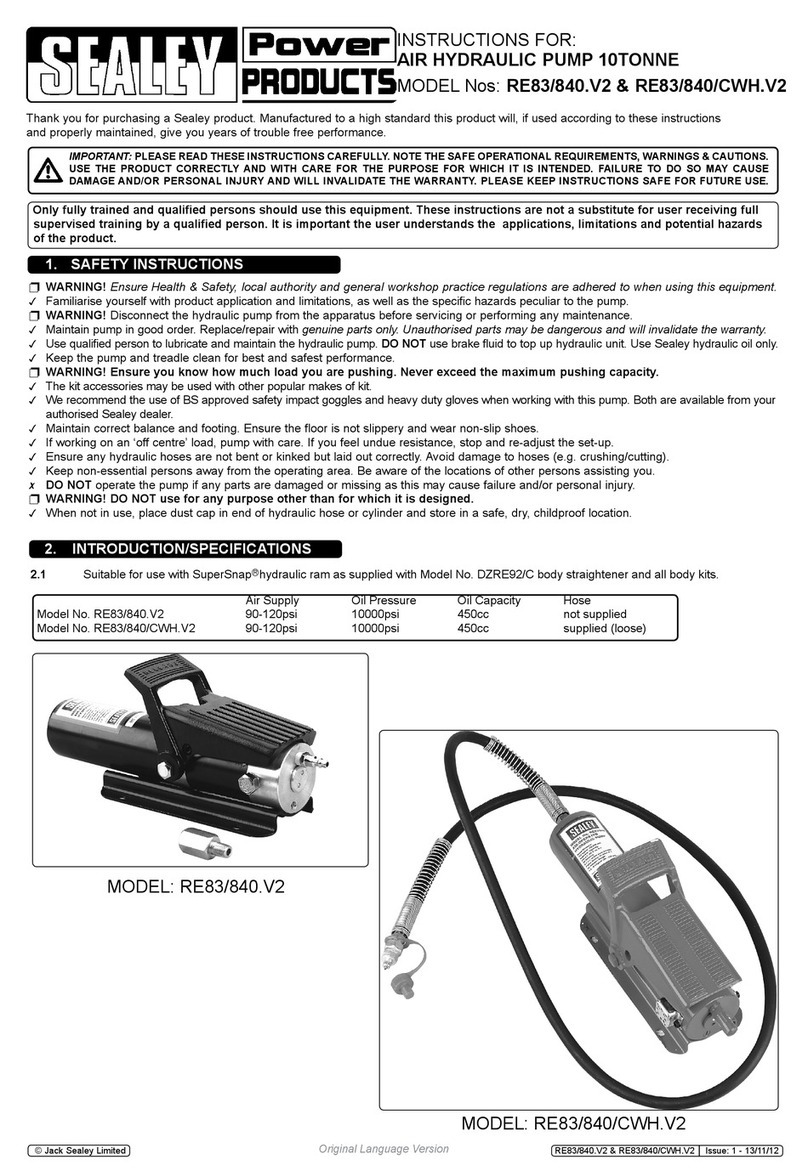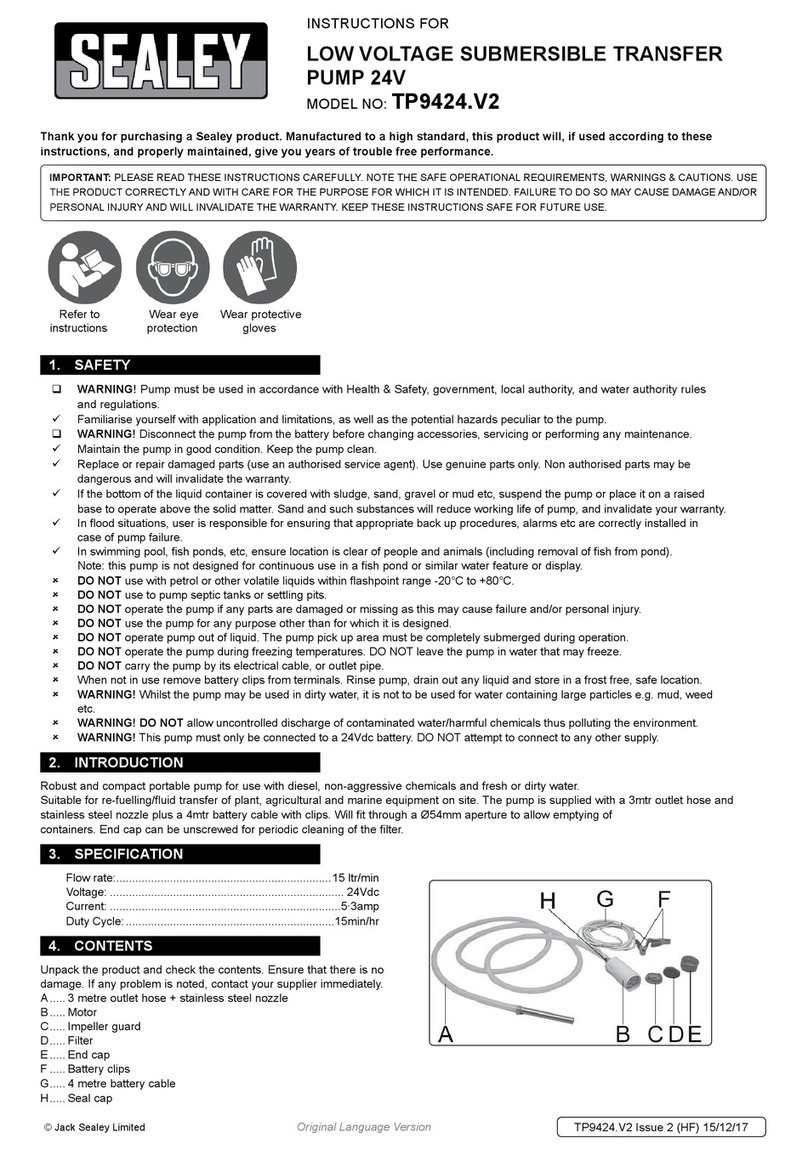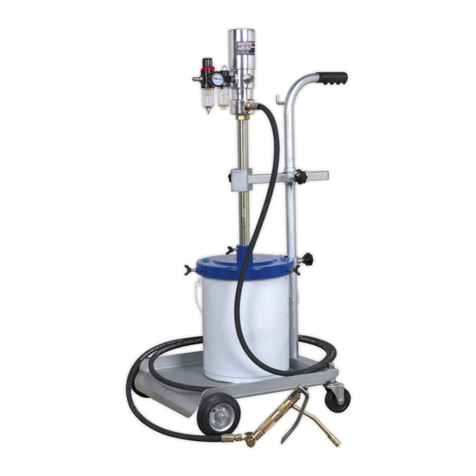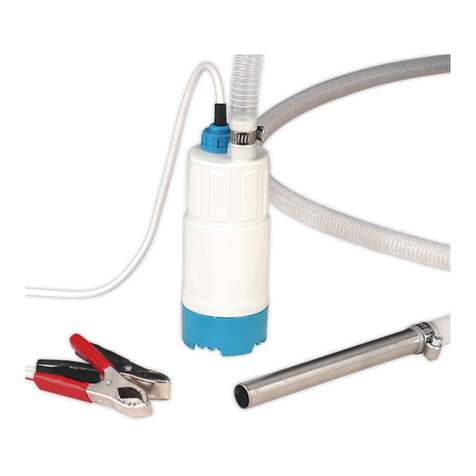
Thank you for purchasing a Sealey product. Manufactured to a high standard this product will, if used according to these instructions and
properly maintained, give you years of trouble free performance.
IMPORTANT: PLEASE READ THESE INSTRUCTIONS CAREFULLY. NOTE THE SAFE OPERATIONAL REQUIREMENTS, WARNINGS AND
CAUTIONS. USE THE PRODUCT CORRECTLY AND WITH CARE FOR THE PURPOSE FOR WHICH IT IS INTENDED. FAILURE TO DO SO MAY
CAUSE DAMAGE AND/OR PERSONAL INJURY AND WILL INVALIDATE THE WARRANTY. PLEASE KEEP INSTRUCTIONS SAFE FOR FUTURE USE.
INSTRUCTIONS FOR:
SURFACE MOUNTING BOOSTER PUMPS 230V
MODEL No's: WPB050 & WPB062S
1. SAFETY INSTRUCTIONS
1.2. GENERAL SAFETY
WARNING! Pump must be used in accordance with Health & Safety, government, local authority and water authority rules and regulations.
Familiarise yourself with the application, limitations and potential hazards peculiar to the pump.
WARNING!Disconnect the pump from the mains power before servicing or performing any maintenance.
Maintain the pump in good condition (use an authorised service agent). Keep the pump clean.
Replace or repair damaged parts. Use genuine parts only. Unauthorised parts may be dangerous and will invalidate the warranty.
Only use for pumping cold or warm water (NOT exceeding 35°C).
If used in situations of possible flooding, user is responsible for installing appropriate back up procedures, alarms etc. in case of pump failure.
If used with swimming pools, fish ponds, etc., ensure areas are clear of people and animals (including removal of fish from ponds). Note that this pump is not
designed for continuous use in a fish pond or similar water feature or display.
DO NOT operate the pump if any parts are damaged or missing as this may cause failure and/or possible personal injury.
DO NOT use the pump for any purpose other than for which it is designed and DO NOT modify it in any way.
DO NOT use to pump chemicals, fuels, fatty liquids or salt water.
DO NOT pump sludge, sand, gravel, mud, or fibrous materials. Ensure the inlet hose will NOT pick up any solid materials. Sand and such substances will
reduce working life of pump, and invalidate your warranty.
DO NOT use to pump septic tanks or settling pits.
DO NOT submerge the pump or the electrical cable in water. Protect the pump from external wet conditions.
DO NOT operate pump during freezing temperatures. DO NOT allow any part of the pump or pipes to freeze.
DO NOT carry pump by the cable, or piping. Only use the handle.
Make sure the work area is tidy and well lit.
Keep children and bystanders away from the work area.
DO NOT operate pump whilst tired or under the influence of alcohol, drugs or medication.
Maintain correct balance and footing, wear non slip shoes whilst positioning the pump.
DO NOT point the water discharge towards another person, electrical wiring or equipment.
Make sure that the pump is correctly positioned to prevent movement during use. Ensure that the area around the pump is kept clear.
When not in use switch off pump and remove plug from power supply. Rinse pump, drain out any water and store
in a frost free, safe location.
WARNING! DO NOT allow uncontrolled discharge of contaminated water, thus polluting the environment.
1.1. ELECTRICAL SAFETY
WARNING! It is the responsibility of the owner and the operator to read, understand and comply with the following:
You must check all electrical products, before use, to ensure that they are safe. You must inspect power cables, plugs, sockets and any other connectors
for wear or damage. You must ensure that the risk of electric shock is minimised by the installation of appropriate safety devices. A Residual Current
Circuit Breaker (RCCB) should be incorporated in the main distribution board. We also recommend that a Residual Current Device (RCD) is used.
It is particularly important to use an RCD with portable products that are plugged into a supply which is not protected by an RCCB. If in any doubt consult
a qualified electrician. You may obtain a Residual Current Device by contacting your Sealey dealer.
You must also read and understand the following instructions concerning electrical safety.
1.1.1. The Electricity at Work Act 1989 requires that all portable electrical appliances, if used on business premises, are tested by a qualified electrician, using a
Portable Appliance Tester (PAT), at least once a year.
1.1.2. The Health & Safety at Work Act 1974 makes owners of electrical appliances responsible for the safe condition of those appliances and the safety of the
appliance operators. If in any doubt about electrical safety, contact a qualified electrician.
1.1.3. Ensure that the insulation on all cables and on the appliance is safe before connecting it to the power supply. See 1.1.1. and 1.1.2. and use a Portable
Appliance Tester.
1.1.4. Ensure that cables are always protected against short circuit and overload.
1.1.5. Regularly inspect power supply cables and plugs for wear or damage and check all connections to ensure that none is loose.
1.1.6. Important: Ensure that the voltage marked on the appliance matches the power supply to be used and that the plug is fitted with the correct fuse - see
fuse rating at right.
1.1.7. DO NOT pull or carry the appliance by the power cable.
1.1.8. DO NOT pull the plug from the socket by the cable.
1.1.9. DO NOT use worn or damaged cables, plugs or connectors. Immediately have any faulty item repaired or
replaced by a qualified electrician. When a BS 1363/A UK 3 pin plug is damaged, cut the cable just
above the plug and dispose of the plug safely.
Fit a new plug according to the following instructions (UK only).
a) Connect the GREEN/YELLOW earth wire to the earth terminal ‘E’.
b) Connect the BROWN live wire to the live terminal ‘L’.
c) Connect the BLUE neutral wire to the neutral terminal ‘N’.
d) After wiring, check that there are no bare wires, that all wires have been correctly
connected, that the cable outer insulation extends beyond the cable restraint and that the restraint is
tight. Double insulated products, which are always marked with this symbol , are fitted with live
(brown) and neutral (blue) wires only. To rewire, connect the wires as indicated above -
DO NOT connect either wire to the earth terminal.
1.1.10. Products which require more than 13 amps are supplied without a plug. In this case you
must contact a qualified electrician to ensure that a suitably rated supply is available.
We recommend that you discuss the installation of an industrial round pin plug and socket with your electrician.
1.1.11. If an extension reel is used it should be fully unwound before connection. A reel with an RCD fitted is preferred since any appliance plugged into it will be
protected. The cable core section is important and should be at least 1.5mm², but to be absolutely sure that the capacity of the reel is suitable for this
product and for others which may be used in the other output sockets, we recommend the use of 2.5mm² section cable.
RECOMMENDED
FUSE RATING: 13AMP
Original Language Version WPB050 & WPB062S Issue: 2(I)- 22/12/15
© Jack Sealey Limited
NOTE: This appliance is not intended for use by persons (including children) with reduced physical, sensory or mental capabilities or lack of experience and
knowledge, unless they have been given supervision or instruction concerning the use of the appliance by a person responsible for their safety. Children should be
supervised to ensure that they do not play with the appliance.
